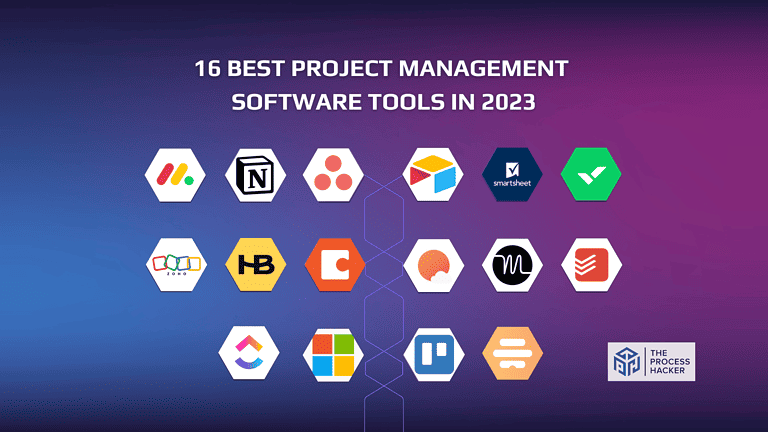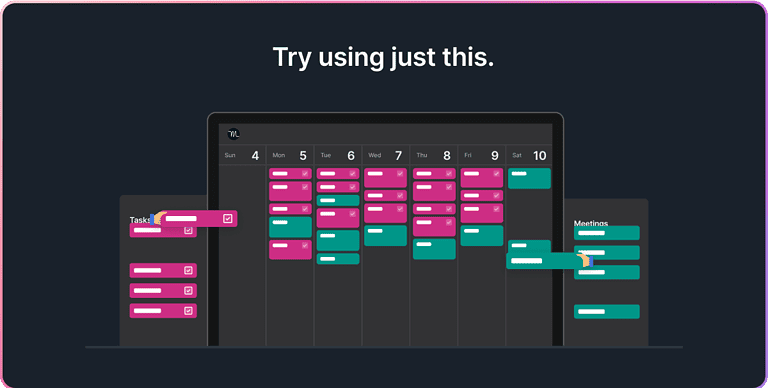How to Create a Blog Using AI: A Step-by-Step Guide for Entrepreneurs and Content Creators
Worried that you are not showing up high on Google Search like other blogs?
A blog is a powerful platform for sharing your expertise, connecting with your target audience, and building a thriving community around your brand. But let’s face it: creating and maintaining a blog can be daunting. That’s where the magic of AI comes in!
Imagine effortlessly generating high-quality and compelling content, optimizing your blog for search engines, and automating mundane tasks. Sounds too good to be true?
Think again! With AI-powered tools, you can streamline your blogging process and achieve remarkable results in less time.
What is AI-Powered Blogging?
AI-powered blogging refers to integrating artificial intelligence technologies into the process of creating, managing, and optimizing blog content. This modern approach leverages AI tools to automate tasks that traditionally require extensive human effort, such as content ideation, keyword research, and even writing drafts.
Why You Should Use AI to Create Your Own Blog
Embracing AI for blog creation offers significant advantages that can transform your entrepreneurial endeavors into a thriving digital platform. Here’s why incorporating AI into your blogging strategy is a game-changer:
Time-Saving Benefits
AI streamlines the entire blogging process. From generating topic ideas based on trending data to suggesting content outlines and even writing initial drafts, AI tools can save you countless hours. This extra time allows you to focus on higher-level strategies and engage more deeply with your audience.
Improved Content Quality and Consistency
Consistency is key in blogging, and AI helps maintain a steady flow of high-quality content. AI algorithms can suggest improvements and ensure your writing meets high standards, essential for keeping your readers engaged and returning for more.
Enhanced SEO Performance
AI tools are adept at analyzing vast amounts of SEO data, from keyword trends to competitor analysis. Integrating AI allows you to optimize your content for search engines more effectively, ensuring that a wider audience sees your posts. AI also stays updated with the latest SEO trends, helping you adapt your strategy to the ever-evolving search engine algorithms.
Ability to Create Content at Scale
For entrepreneurs looking to expand their digital footprint, AI is indispensable. It enables you to scale your content production without sacrificing quality. Whether you’re managing one blog or multiple, AI can handle increased content demands, ensuring every post remains relevant and engaging.
By leveraging AI in blogging, you ensure that your digital presence is maintained and dynamically improved, keeping you ahead in the competitive landscape of digital entrepreneurship.
How to Start a Blog Using AI: Your Step-by-Step Guide
Embarking on creating an online blog with AI starts with understanding the tools and platforms that make AI integration possible. This guide will walk you through the essential steps to leverage AI in crafting a blog that reaches and resonates with your target audience.
Step 1: Choose Your Blogging Platforms and Web Hosting Companies
Selecting the right platform and web hosting company is foundational to your blogging success. Here are some of the top options that support AI functionalities, each catering to different needs and expertise levels:
WordPress
As the world’s most popular blogging platform, you build your WordPress blog with extensive customization options through plugins and themes. For AI-powered blogging, numerous plugins can automate content creation, SEO optimization, and audience analytics. The WordPress theme is ideal for those who seek full control over their blog’s design and functionality.
Bluehost
If you choose WordPress as your platform, Bluehost is a highly recommended hosting provider that integrates seamlessly. Known for its reliability and excellent customer service, Bluehost is the web host to ensure your entire blog remains accessible and performs well, with easy installations for WordPress and the necessary AI plugins.
Medium
Medium is a user-friendly platform that focuses on writing and networking without the complexities of technical setup. It’s perfect if you want to start with a free blog that prioritizes ease of use and has a built-in audience over customization. Medium’s algorithm can help promote your content to the right readers, leveraging AI to enhance content visibility.
Webflow
Webflow is a powerful and flexible website builder, perfect for creating visually stunning and interactive blogs. Its drag-and-drop interface allows you to design your blog without any coding knowledge easily. Plus, Webflow’s AI-powered features can optimize your site for SEO and performance.
Choosing the right platform and host will depend on your specific needs—full customization, ease of use, visual design, or robust hosting services. Each option provides unique advantages for leveraging AI in your blogging strategy, helping you efficiently reach and engage your audience.
Step 2: Select Your AI Writing Tools
Once you have your blogging platform and hosting set up, the next step is to choose the AI tools that will assist you in creating compelling, optimized content. Here’s a breakdown of some of the best AI writing tools available that can help elevate your blogging game:
SurferSEO
This tool is invaluable for boosting their SEO and writing blog posts. SurferSEO uses AI to analyze your content against top-performing blog pages and provides actionable insights to optimize your posts for search engines. It helps ensure that your blog is structured and written to maximize visibility.
ChatGPT
Developed by OpenAI, ChatGPT can generate informative and engaging text based on your prompts and blog’s niche. It’s excellent for drafting blog posts, creating content outlines, or generating ideas for new topics. Its versatility makes it a fantastic tool for any content creator.
Claude
From the creators at Anthropic, Claude is another conversational AI that excels in understanding and generating human-like text. This tool can assist in refining your writing tone, suggesting content improvements, and ensuring your blog maintains a natural and appealing voice.
Jasper
Jasper AI specializes in creating high-quality content quickly. With templates for writing blog posts, posting social media updates, and more, Jasper can help you maintain a consistent content schedule. It’s beneficial for generating creative content that engages readers.
Grammarly
Beyond simple grammar and spelling checks, Grammarly’s AI analyzes the tone and clarity of your writing, offering suggestions to improve readability and effectiveness. It’s an essential tool for ensuring your blog posts are polished and professional before publication.
Gemini AI
Developed by Google, Gemini AI is a powerful tool that combines text and image generation capabilities. This makes it an excellent choice for creating visually appealing blog posts with relevant images and graphics, enhancing the overall user experience.
Selecting the right mix of AI writing tools will depend on your specific needs, such as content volume, type of audience, and SEO goals. By incorporating these tools into your workflow, you can enhance the quality of your content, streamline the writing process, and ensure your blog remains competitive and engaging.
Step 3: Perform Keyword Research
Keyword research is crucial for ensuring your blog reaches its intended audience. AI-powered tools can simplify this process by identifying relevant and profitable keywords.
- Using AI-powered keyword research tools: AI tools streamline the keyword research process by quickly analyzing large data sets to find the keywords your target audience is searching for. These tools can also predict future trends, helping you stay ahead of the curve.
- Identifying profitable blog topics: AI can help identify gaps in the market by analyzing competitor content and highlighting underserved issues. By targeting these areas, you can capture an often-overlooked niche audience.
Recommended Tools:
- Ahrefs: Ahrefs is renowned for its comprehensive keyword research capabilities. It offers detailed insights into keyword difficulty, search volume, and ranking potential. Ahrefs’ Content Explorer also helps identify content gaps and new topic opportunities by analyzing what’s currently performing well in your niche.
- Semrush: Semrush is another powerful tool that uses AI to provide extensive keyword analysis and topic discovery features. It can suggest related keywords, provide information on search intent, and even offer SEO content templates to help structure your posts for optimal ranking.
By integrating these AI-powered tools into your keyword research strategy, you can ensure that every blog post has the potential to attract and engage the right audience, thereby increasing your blog’s overall profitability and success.
Step 4: Generate Blog Post Ideas
Creating a steady stream of fresh, relevant content is key to maintaining an engaging blog. AI can revolutionize how you generate ideas, ensuring that your blog always offers something new and exciting. Here’s how you can leverage AI for content ideation and refine your choices to select the best ideas:
Leveraging AI for Content Ideation
AI tools can analyze trends, reader preferences, and competitor content to suggest unique and timely blog post ideas. By feeding it information about your blog niche and target audience, AI can produce various topics you might have yet to consider. This process saves time and injects creativity into your content planning.
Refining and Selecting the Best Ideas
Once you have a list of potential topics, AI can help you refine them based on strategic factors such as search volume, potential engagement, and relevance to your target audience. AI-driven analytics can prioritize ideas with the highest potential for success, helping you decide which topics will be most beneficial to pursue.
Implementing AI Tools for Idea Generation
- Use AI-driven tools like Originality.ai or HubSpot’s Blog Ideas Generator, which analyzes social shares and search data to recommend topics that resonate with your audience.
- Employ predictive analytics tools that forecast topic popularity based on online behavior patterns, enabling you to plan content that aligns with future trends.
Step 5: Create an AI-Generated Outline
Once you have your blog post ideas, the next step is to structure them effectively. AI can assist you in creating detailed outlines that appeal to your readers and adhere to SEO best practices.
AI tools can generate a logical flow for your articles, organizing them into sections and subsections that make sense for your topic and audience. By providing a coherent structure upfront, AI helps ensure your content is engaging and easy to follow. This structure can include introductions, key points, subheadings, and conclusions, all organized to maximize reader retention.
Integrating SEO elements into your outline is crucial for ensuring your content is discoverable. AI can suggest where to place keywords naturally within your text, how to optimize headers for SEO, and what metadata (like meta descriptions and blog post title tags) will enhance your visibility in search results. These tools can also help identify internal linking opportunities within your content, which is essential for SEO and keeping readers on your site longer.
Tools for AI-Generated Outlines:
- Jasper (formerly Jarvis): This AI writing assistant is great for generating article outlines that are both reader-friendly and optimized for SEO. Jasper can suggest headings and subheadings that include your targeted keywords, making it easier to draft articles that meet SEO criteria.
- SurferSEO’s Content Editor: Integrating directly with your writing process, SurferSEO can guide you on keyword density, suggest terms that should be included for better relevance, and help ensure that your content structure aligns with what is performing best in search engines.
Step 6: Write Your First Blog Post with AI
Writing your first blog post using AI can significantly streamline the creative process while maintaining high content quality. Here’s how you can effectively use AI to write and refine your blog posts:
Prompting AI for High-Quality Content
Start a blog by feeding your AI tool detailed prompts that include the main topic, desired tone, audience demographics, and any specific points you want to cover. AI can generate a rough draft based on these inputs.
The more detailed your prompts, the more aligned the output will be with your expectations. This step speeds up the writing process and ensures that the content aligns with your blog’s theme and audience’s interests.
Editing and Refining AI-Generated Text
While AI can produce comprehensive drafts, reviewing and refining this content is crucial to ensure it reflects your brand’s voice and adheres to your editorial standards. Use this opportunity to add personal anecdotes, more detailed explanations, or specific examples that resonate with your readers.
Additionally, proofread for grammar, style, and coherence, making adjustments to maintain a natural and engaging flow. This refining process helps personalize the AI-generated content, making it unique to your blog.
Tools to Assist in Writing and Refining
- Grammarly: Use Grammarly to ensure your AI-generated content is grammatically correct and stylistically polished. Grammarly’s advanced features can also help fine-tune the tone and clarity of your posts.
- Hemingway Editor: This tool is excellent for simplifying and strengthening your writing. It highlights complex sentences and suggests simpler alternatives, making your content more accessible to a broader audience.
- ChatGPT or Claude: These AI writing assistants can help draft the initial content. They can be prompted to produce specific sections of your post, which you can edit and expand upon to ensure accuracy and depth.
- QuillBot: Incorporate QuillBot to rephrase and optimize the AI-generated content for readability and SEO. QuillBot’s paraphrasing tool can help you refine the text to make it more unique and tailored to your voice, enhancing the originality of your content.
By combining AI’s capabilities with your unique insights and editorial touch, you can produce compelling, high-quality blog posts that engage and inform your audience. This approach saves time and leverages technology to enhance the creative process, allowing you to focus on connecting with your readers and growing your blog.
Step 7: Optimize Your Content for Search Engines
Once you have crafted your blog post, optimizing it for search engines is the final and critical step. This process involves using AI tools to ensure your content fully aligns with SEO best practices, making your posts more discoverable and enhancing your online presence.
Using AI Tools for On-Page SEO
AI-powered tools like Surfer SEO can analyze your content against top-performing competitors and provide specific recommendations to optimize it. These tools examine keyword density, content length, meta descriptions, and header distribution. Surfer SEO offers real-time suggestions for adjustments to improve your SEO score, ensuring your content is as competitive as possible in search rankings.
Incorporating Semantic Keywords
Semantic keywords are terms and phrases related to your primary keyword that help search engines understand the context of your content. AI tools can identify semantic keywords that should be incorporated into your blog post.
Including these keywords helps search engines better grasp the topic and relevance of your content, enhancing your visibility and ranking. It also ensures more comprehensive topic coverage, improving user engagement and satisfaction.
Tools and Techniques to Enhance SEO
- Ahrefs: Use Ahrefs to examine your blog post’s SEO health in depth. Use its Site Audit feature to identify technical SEO issues and its Content Gap tool to find opportunities for new keywords. Ahrefs is also excellent for monitoring your rankings and understanding your competitors’ keyword strategies.
- Surfer SEO: Use this tool to get a detailed SEO audit of your post. Follow the guidelines for optimal keyword usage, and adjust your text based on the SERP Analyzer to see how your content compares to what’s currently ranking.
- Google’s Keyword Planner or Semrush: These tools can help identify primary and semantic keywords. They offer insights into search volumes, trends, and competitiveness of keywords, aiding in selecting the most effective terms to target.
- Yoast SEO Plugin for WordPress: If you’re using WordPress, Yoast SEO can be a powerful tool. It guides you through optimizing your metadata, using keywords effectively in your content, and ensuring your readability score is high.
Step 8: Design Your Blog with AI Assistance
The visual appeal of your blog is just as important as the quality of your content. A well-designed blog can captivate visitors, enhance the user experience, and increase engagement.
AI-Powered Design Tools and Templates
AI-driven design tools can help you create a professional-looking blog without needing extensive graphic design skills. These tools offer customizable templates that automatically adjust to your brand’s style and color scheme, ensuring consistency across your site. AI can also suggest layout improvements and optimal placement of elements based on user interaction data.
Creating Custom Graphics and Images
AI can also help generate unique graphics and images that resonate with your content. Tools like Canva’s AI-powered design suite allow you to create compelling visuals tailored to each post’s theme. Additionally, AI photo editors can enhance images to better fit your blog’s aesthetic, improving visual impact and attracting more views.
Recommended AI Design Tools
- Canva: Canva offers an extensive library of templates and design elements that can be customized using its AI functionalities. Its Magic Resize tool and content planner are particularly useful for bloggers looking to maintain a consistent look while efficiently managing design tasks.
- Adobe Spark: Adobe Spark uses AI to suggest design themes based on your content and brand identity. It simplifies the creation of web graphics, video stories, and animations, making it easier to produce eye-catching visuals that enhance your posts.
- Crello: Similar to Canva, Crello features a powerful AI design assistant that helps you create dynamic designs with minimal effort. It’s particularly handy for animations and interactive visuals that can make your blog stand out.
- Visme: Visme integrates AI to offer data visualization tools, making it ideal for creating infographics and data-heavy images that are visually appealing and easy to understand.
Step 9: Promote Your Blog Using AI
After creating and optimizing your content, promoting your blog is essential to reach a broader audience and increase engagement. AI can be pivotal in efficiently managing and scaling your promotion efforts.
AI-Driven Social Media Scheduling
AI tools can optimize your social media strategy by analyzing the best times to post, predicting content performance, and suggesting content variations to maximize engagement. These tools can automate the scheduling of posts across multiple platforms, ensuring your blog receives consistent exposure without requiring constant manual input.
Email Marketing Automation
AI can transform your email marketing strategy by personalizing email content for different audience segments based on their behavior and interaction with your site. AI-driven email automation tools can send triggered emails based on specific actions, like a new blog post or a follow-up email to readers who clicked on a previous link. This targeted approach helps increase open rates, click-through rates, and overall engagement with your blog.
Recommended AI Promotion Tools
- Buffer or Hootsuite: These platforms use AI to manage social media posts and analyze social engagement data. They can help you schedule posts at optimal times and provide insights into your audience’s preferences and behaviors.
- Mailchimp or ActiveCampaign: These email marketing platforms feature AI capabilities that allow you to automate campaigns and segment your audience. They offer predictive sending features and content optimization suggestions to improve engagement rates.
- BuzzSumo: Use BuzzSumo to identify trending topics and influencers in your niche. The tool’s AI capabilities help you craft content strategies that resonate with trends and audience preferences, enhancing your promotional efforts.
- HubSpot: Known for its comprehensive CRM capabilities, HubSpot offers AI-driven marketing automation tools that help tailor your marketing messages based on user data and interactions.
Step 10: Analyze and Improve Your Blog’s Performance
The final step in managing a successful blog involves continuously monitoring and improving your blog’s performance. Utilizing AI for data analysis can provide deep insights into how your content performs and guide you in making informed, data-driven decisions for growth.
Utilizing AI for Data Analysis
AI tools can track and analyze a vast amount of data from your blog and social media platforms to provide comprehensive analytics. These tools assess everything from page views and user engagement to bounce rates and conversion metrics. AI can identify patterns and trends that are not immediately obvious, offering valuable insights into what works and what doesn’t on your blog.
Making Data-Driven Decisions for Growth
You can strategically adjust your content, design, SEO strategies, and promotional efforts based on the insights gathered. AI-driven analysis helps pinpoint the most effective types of content, optimal posting schedules, and audience preferences. This tailored approach ensures that each adjustment you make is informed by reliable data, maximizing the potential for growth and engagement.
Recommended AI Analytics Tools
- Google Analytics: Utilize Google Analytics to monitor real-time traffic, user behavior, and conversion rates. Its AI capabilities can highlight significant trends and anomalies in your data, helping you understand the impact of your content.
- Ahrefs: This tool is essential for SEO monitoring and competitive analysis. Ahrefs can track your rankings, monitor backlinks, and provide insights on keywords and SEO performance. Its AI-driven Site Audit feature identifies SEO issues and suggests actionable improvements.
- SEMrush: This tool not only assists in SEO and keyword tracking but also offers features to analyze your site’s performance in comparison to competitors. AI-enhanced features provide suggestions for improving visibility and engagement.
- Crazy Egg: Crazy Egg uses AI to create heatmaps and visitor recordings, giving you a visual representation of where users are clicking and how they navigate your site. This information is invaluable for improving user experience and content placement.
- Mixpanel: An advanced analytics tool that uses machine learning to analyze user interactions on your blog. Mixpanel can help you understand complex user journeys and refine your strategies based on how different segments interact with your content.
Key Considerations for Successfully Creating a Blog Using AI
While AI tools can significantly enhance the efficiency and effectiveness of blog creation, it’s essential to consider several factors to ensure your blog remains authentic and engaging.
AI is a powerful tool, but infusing your personality and brand identity into your content is essential. Your unique voice sets you apart and fosters a loyal following.
While AI can generate drafts and ideas, remember to review and edit them to ensure they align with your brand’s tone and message. A human touch adds authenticity and fosters a connection with your readers.
The field of AI is constantly evolving. Stay informed about the latest tools and technologies to leverage their full potential and remain competitive in the blogging landscape.
Taking it to the Next Level: How to Monetize Your AI-Powered Blog
Once you’ve established your blog and gained traction, consider monetizing your efforts to generate income.
Affiliate marketing strategies
Receive money blogging by partnering with relevant brands and promoting their products or services on your blog, earning a commission for every sale made through your unique affiliate links. Research and select affiliate programs that align with your niche and audience interests. Integrate affiliate links seamlessly into your content, providing genuine recommendations and valuable insights.
Creating and selling digital products
Leverage your expertise to create ebooks, online courses, or templates that cater to your audience’s needs. AI can assist in the content creation and marketing of these products, streamlining the process and ensuring high-quality deliverables. Develop products that offer solutions, insights, or entertainment, positioning yourself as a trusted authority in your field.
Offering AI-enhanced services
If you have a knack for AI, consider offering services like content optimization, AI-powered chatbots, or data analysis to other businesses or bloggers. Position yourself as an AI consultant or specialist, helping others harness the power of AI to achieve their goals.
Alternatives to AI-Powered Blogging
AI-powered blogging isn’t the only way to create content. Consider these alternatives:
Traditional content creation methods
If you enjoy the writing process and have the time, you can opt for traditional content creation methods, relying on your own creativity and research. This hands-on approach allows you to maintain full control over your content and express your unique voice. Immerse yourself in the research process, gather insights, and craft compelling narratives that resonate with your audience.
Outsourcing to human writers
If you lack the time or writing skills, consider outsourcing content creation to professional writers who can produce high-quality content tailored to your needs. This frees up your time to focus on other aspects of your blog, such as promotion and community building. Communicate your expectations and brand voice to ensure the content aligns with your vision.
Hybrid approaches combining AI and human expertise
A hybrid approach leverages the strengths of both AI and human writers, ensuring efficiency and creativity. AI can generate ideas and drafts while human writers add the final touch, refine the language, and ensure quality. This collaborative approach can result in exceptional content that captures your brand’s essence and engages your audience.
Final Thoughts on Blogging with AI
Congratulations! You’re now equipped with the knowledge to create a blog using AI in 2024. By leveraging artificial intelligence, you can streamline your content creation process, improve your SEO, and scale your online presence like never before.
Remember, finding the right balance between AI assistance and your unique entrepreneurial voice is the key to success. So why wait?
Start a blog journey today and watch your small business thrive in the digital landscape. The future of blogging is here—are you ready to lead the pack?







